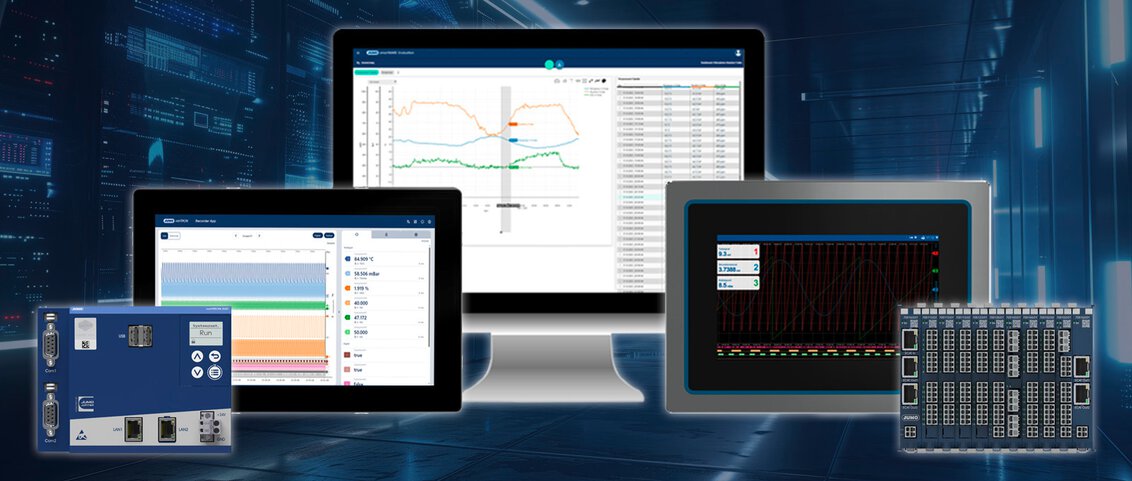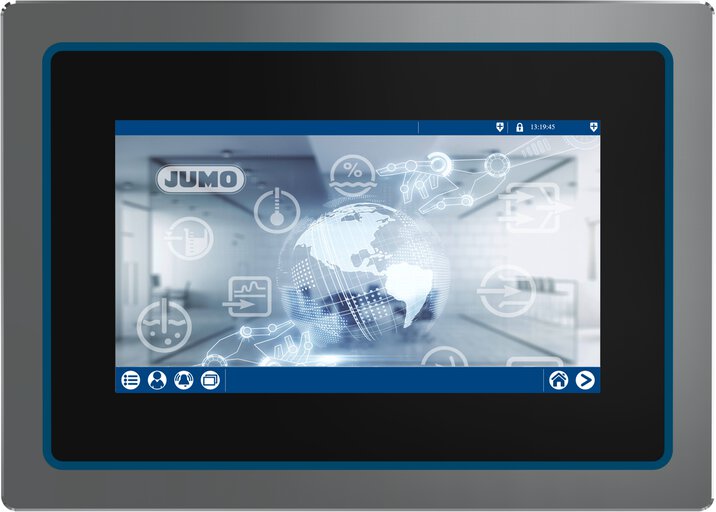

HMI: indispensable in industrial automation
In industrial automation, the Human-Machine Interface (HMI) plays a vital role. But what exactly is an HMI, how does it work, how does it differ from SCADA and PLCs, and what is its significance in today’s production environment? Explore its advantages for industries like water treatment, food processing, and mechanical engineering.
In this blog, we cover:
What is an HMI?
HMI stands for Human-Machine Interface. It serves as the user interface through which an operator or technician interacts with a machine, process, or system. Examples include touch screens, control buttons, or graphic displays. The main goal of an HMI is to present complex technical information in a clear and user-friendly manner.
A well-designed HMI enables users to:
- Monitor process values (such as temperature, pressure, or flow).
- Adjust settings.
- View or reset alarms.
- Perform diagnostics.
By using an HMI, operators can efficiently and safely manage and monitor machines, plants, and production processes, making it a critical component of industrial automation.
How does an HMI work?
An HMI is typically connected to a PLC (Programmable Logic Controller) or another control system. Using industrial protocols such as Modbus, PROFINET, or Ethernet/IP, the HMI exchanges data with the underlying automation layer, providing users with real-time insights into the process flow.
HMIs can function as standalone devices or communicate with other industrial systems, such as SCADA systems or cloud solutions. This versatility makes them ideal for a wide variety of applications within industrial automation.
HMI vs. SCADA : what is the difference?
A common question is: what is the difference between an HMI and a SCADA system? In summary:
HMI: A local user interface that enables operators to interact directly with a machine or process. It offers a specific, detailed view of one part of the process.
SCADA: A centralized system that oversees multiple HMIs and PLCs, providing a comprehensive view of various processes, often with remote access. SCADA systems are designed for managing large, complex control systems across extensive areas.
In essence, an HMI is tailored for direct interaction at the machine level, while SCADA offers a broader perspective and centralized management of multiple systems.
HMI vs. PLC: what is the difference?
A Programmable Logic Controller (PLC) is the brain of the machine: it receives signals from sensors, processes them and controls actuators. An HMI is the user interface, allowing operators to change setting ans monitor processes.
PLC = control, HMI = visualisation and interaction. Together they form a powerful duo in industrial automation.
Where are HMI systems used?
The applications of HMIs are diverse and essential across various industrial sectors:
Water Technology
In water treatment plants, HMIs are used to visualize pumping stations, valves, and level measurements. Operators can easily monitor alarms or manually intervene in the process via the interface, ensuring safe and efficient water management.
Food Industry
Hygiene is a critical factor in the food industry. As a result, HMIs are often constructed from stainless steel and designed with IP69K protection. They enable operators to monitor processes without direct contact with the underlying equipment, which is vital for maintaining food safety.
Machine Building and OEM
For machine builders, a compact and user-friendly HMI is a key component of the overall user experience. It allows end users to quickly commission machines or identify faults, enhancing efficiency in machine manufacturing.

Schematic representation of an HMI in an electric heating system
Which HMI suits your application?
Several factors come into play when choosing an HMI. Here are the most important selection criteria:
1. Functionality and ease of use
-
- Intuitive user interface: quick and easy operation for operators
- Touchscreen or physical buttons: depending on the work environment
- Multilingual support: essential for international production environments
2. Connectivity and communication
-
- Support for industrial protocols: PROFINET, EtherNet/IP, Modbus OPC UA, IO link
- Compatibility with PLCs and controllers: ensure seamless integration
- Cloud — and IIoT integration: for remote monitoring and smart manufacturing
3. Environmental factors and robustness
-
- Protection class (IP rating): for example, IP65 for humid or dusty environments
- Temperature resistance and chemical resistance: for extreme conditions or hygienic sectors such as food and pharma
- Explosion protection (ATEX-certification): for hazardous environments
4. Screen size and resolution
-
- Dimensions: from compact 4" displays to large multi-touch screens
- Readability under different lighting conditions: anti-reflection and high brightness may be required
5. Software and expandability
-
- User-friendly configuration software: for easy deployment
- Scalability and modularity: ability to add additional features
- Edge computing & Artificial Intelligence (AI): increasingly used for predictive maintenance
6. Security and cybersecurity
-
- Access control: password protection or RFID authentication
- Network security: support for VPN, firewalls and encrytion
7. Cost and Total Cost of Ownership (TCO)
-
- Price vs. functionality: choose an HMI that suits your needs
- Maintenance and longevity: long support and parts availability
- Energy consumption: efficient systems help reduce operational costs
The future of HMI
Smart, flexible and connected!
With the advent of Industry 4.0, HMIs are becoming more advanced and integral to industrial automation. Key developments include:
- Cloud-connected HMIs (e.g., JUMO Cloud) for seamless data access and storage.
- Web-based HMIs that enable remote control via laptops or smartphones.
- Cybersecurity solutions to ensure secure remote access.
These innovations are driving more intelligent, flexible, and integrated industrial automation systems.
Conclusion
A modern HMI is far more than just a basic control screen. It is the cornerstone of efficient, safe, and optimized management of industrial processes. Whether you work in the water sector, food industry, or mechanical engineering, investing in the right HMI solution directly enhances productivity, reliability, and user-friendliness. The Human-Machine Interface has become an essential component in any modern industrial automation environment.
Looking for an HMI tailored to your application? Contact us for personalized advice!
About the writer
My name is Saskia van der Laan and I have been working in content marketing for several years. It is my passion to present technical topics in an interesting and accessbible way for eveyone. Outside work I like to be active for example in the gym and I like to walk my dog.




